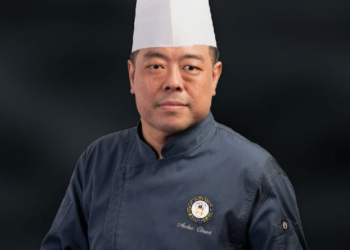-CB Edit Desk
Restaurant owners have a plan to build their own in-house delivery capabilities and develop their own ordering channels, as the second wave of covid has created uncertainty over the dine-in business for the food services industry. The industry deliveries rely on food aggregators in India—Zomato and Swiggy — several restaurants are building direct ordering capabilities, pushing for lowered commissions and finding more ways to drive business through takeaway channels.
“Saving on commissions is key to the survival and thriving of our business, even more so today than ever before,” said Gauri Devidayal, managing committee member of the National Restaurant Association of India (NRAI), at a virtual session organized by the industry body on Thursday. Devidayal is also a partner at Food Matters, India, that owns The Table in Mumbai.
“Also require servicing an increased radius of delivery, and therefore having the potential for higher revenue. Right now, we seem to restrict ourselves to the limits put on us by the aggregators. In the last one year, we’ve seen the potential for going well beyond this, and reap the benefits…We have a long way to go. This will not be an easy process,” she said, recognising the enormous challenge that setting up their own delivery systems is for restaurants, as reported by The Mint.
As India’s second wave has shut down dine-in business, restaurants are once again in a bind in many parts of the country, especially the large metros. Only takeaways and home deliveries are being allowed in many states. This has led to growth in business for food delivery platforms.

The online food delivery business is estimated at ₹25,000 crores, NRAI members said. Aggregators contribute to 6% of the total restaurant business in India. A higher dependence on delivery could eat into the restaurant industry as they pay high commissions to aggregators. Direct ordering is not a binary solution, it is one more channel that we need to really work hard towards developing, said Riyaaz Amlani, MD & CEO, Impresario Handmade Restaurants.
“In the next few months, we spend our time, energies and some amount of money we invest in building our own channels back and we take that power back. It is also way more profitable. Right now, we are paying about 40% or 42% for discovery, delivery, and all the discounts that are being done. When we deliver our food, the margins become way better. Not only that, the average order value is also much higher when a customer orders directly from you,” he said.
Amlani’s company runs popular joints such as Social and Smoke House Delhi. Social has been pushing its own desktop platform for direct deliveries. The restaurant industry has been seeking greater transparency from aggregators and attempting to tide over their dominance for a few years now. Even though aggregators have helped sustain several small businesses during the lockdown, the industry body feels more businesses should build in-house capabilities. NRAI at the meet offered to set up boot camps for its member partners to help build their own ordering capabilities.
Last year, the association partnered with DotPe to build ordering and payment capabilities for standalone restaurants. DotPe offers digital ordering solutions to restaurants and retailers. Yet many participants acknowledged that creating their own ordering channels is an uphill task, especially as aggregators offer both variety and discounts, which are a big draw for consumers.
“The fundamental challenges restaurants are facing today is they don’t have a good platform to receive these orders, there’s a fair amount of technology that is employed by aggregators,” said restauranteur Thomas Fenn. Fenn however said that self-delivery is not realistic for smaller players because “they simply don’t have the volume” to support a fleet. They also see 90% of their delivery business coming from the aggregators. “But we have to start somewhere,” he added.
For larger players such as the pizza chain, Domino’s dependence on aggregators is more beneficial. Aggregators have helped bring new consumers into its fold. However, given its sheer scale it controls its own delivery fleet, said Pratik Pota, CEO, Jubilant Foodworks Ltd. Domino’s also sees significant business via its own ordering platforms. The promoters of HT Media Ltd, which publishes Mint, and Jubilant FoodWorks are closely related. There are, however, no promoter cross-holdings. Devidayal said restaurants must start incentivizing people to order from them directly and build more marketing capabilities to engage with consumers.
“NRAI strongly feels that it is imperative that businesses take larger control of their digital landscapes to protect their long-term interest,” it said in a statement. It further emphasised that every restaurant must invest some time and money to promote their own delivery business. The restaurants must also, once again, establish their direct connection with their guests, NRAI concluded.






